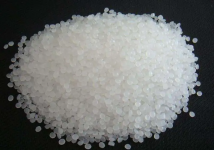read: 417 time:2025-06-03 12:59:43 from:化易天下
Phenols are an important class of organic compounds characterized by a hydroxyl group (-OH) directly bonded to an aromatic ring. A common question among chemistry students and professionals alike is: "Why are phenols acidic?" This article delves into the factors contributing to the acidic nature of phenols, breaking down the chemistry behind it.
The first step in understanding why phenols are acidic is to examine their structure. Phenols consist of a hydroxyl group attached to a benzene ring. This benzene ring is a highly conjugated system, meaning that it has alternating single and double bonds which allow the delocalization of electrons.
When phenol donates a proton (H+), it forms a phenoxide ion. This ion benefits from resonance stabilization, where the negative charge on the oxygen can be delocalized over the aromatic ring. This delocalization distributes the charge across several atoms, reducing the energy of the phenoxide ion and making it more stable. The increased stability of the phenoxide ion is a key reason why phenols are acidic.
Another factor influencing the acidity of phenols is the role of hydrogen bonding and solvation effects. In aqueous solution, the phenoxide ion can form hydrogen bonds with water molecules. This solvation stabilizes the phenoxide ion, further encouraging the release of a proton from phenol.
This interaction with water highlights another layer of understanding regarding why phenols are acidic. The solvent not only stabilizes the ion but also contributes to the overall decrease in free energy when phenol ionizes, thereby increasing its acidity.
Phenols are often compared to alcohols, which also have a hydroxyl group but lack an aromatic ring. While alcohols are generally neutral in water, phenols exhibit acidic behavior. The aromatic ring in phenols plays a crucial role in this difference.
The electron-withdrawing effect of the benzene ring makes the oxygen-hydrogen bond in phenol more polar compared to alcohols. This polarity facilitates the release of the hydrogen ion (proton), contributing to the acidic nature of phenols. Thus, the presence of the aromatic ring is another critical aspect explaining why phenols are acidic.
The acidity of phenols can be further modulated by substituents attached to the aromatic ring. Electron-withdrawing groups (like -NO2, -CN) increase the acidity by further stabilizing the negative charge on the oxygen after deprotonation. Conversely, electron-donating groups (like -CH3, -OCH3) decrease the acidity by destabilizing the phenoxide ion.
Understanding these substituent effects is essential for chemists when designing phenol-based compounds with specific acidity requirements, further reinforcing the concept of why phenols are acidic.
In summary, the acidic nature of phenols can be attributed to several interrelated factors. The resonance stabilization of the phenoxide ion, the solvation effects in aqueous environments, the electron-withdrawing effects of the aromatic ring, and the influence of substituents all contribute to the acidity of phenols. Understanding why phenols are acidic not only provides insight into their chemical behavior but also enables the practical application of this knowledge in various chemical processes and industries.

Jincheng Petrochemical's 300000 ton polypropylene plant successfully trial production, 2024 polypropylene market analysis

The ABS market remains sluggish, what is the future direction?

Market differentiation of bisphenol A intensifies: prices rise in East China, while prices generally decline in other regions

The production method and process flow of silicone acrylic lotion, and what are the common raw materials